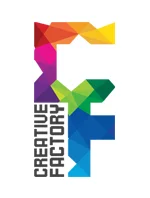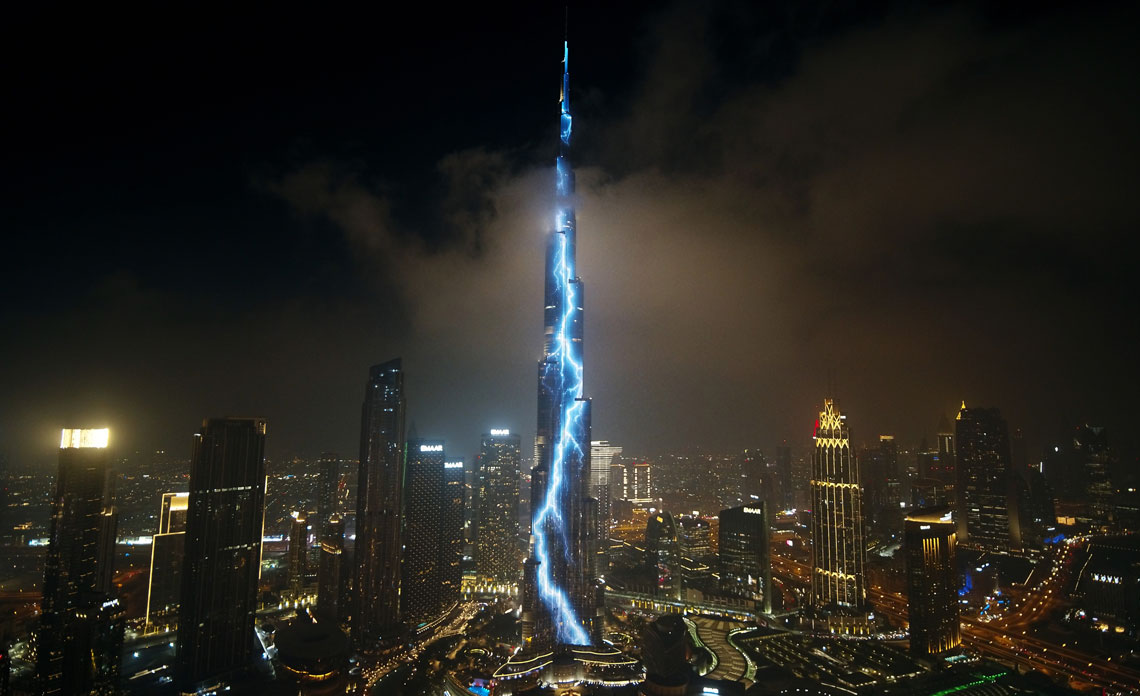In today’s world of experiential art and technology, projection mapping stands as a pinnacle of innovation. This captivating technique involves projecting intricate visuals onto various architectural surfaces, transforming buildings into immersive canvases that captivate audiences worldwide.
Our team of experts at Creative Factory have spent decades perfecting the art and science of architectural mapping and in this blog we will dive into some of its intricacies to see how it works and what makes it stand out as an experience.
Projection Tools & Techniques
The quality of the tools that are required to achieve an exceptional experience cannot be understated. The mix of tools and techniques allows us to create architectural projection marvels that can captivate the audience. The following is a prerequisite that our team acquires and executes to achieve architectural mapping:
- High-lumen projectors for accurate and vibrant projections
- Meticulous calibration methods to enhance visual accuracy
- Critical placement to ensure comprehensive coverage of architectural surfaces
- Sophisticated mapping software to align projected visuals with architectural elements
- Utilizing precise synchronization to enable distortion-free projection, delivering a seamless visual experience.
Content Creation
The creation of content plays a pivotal role in the success of architectural projection mapping. Creative teams design visuals and animations tailored to complement the building’s structure, adding depth, dimension, and storytelling to the projection. This content undergoes meticulous testing and fine-tuning to ensure it synchronizes flawlessly with the architectural elements.
In one of our projects involving architectural mapping, our team embarked on a thrilling journey to transform the excitement for the famous series Stranger Things, Season 4, into an unforgettable experience at Mumbai’s iconic Gateway of India. We accomplished a significant milestone, setting India apart among the 14 countries involved in hosting this activation.
Challenges and Innovations
Architectural projection mapping is not without its challenges. Environmental factors such as ambient light, weather conditions, and the building’s texture pose technical hurdles. Overcoming these challenges requires continuous innovation in projection technology, including advancements in projectors’ brightness, contrast ratios, and adaptability to diverse surfaces.
We’ve embarked on architectural mapping projects for iconic landmarks like India Gate, the Burj Khalifa, and Biltmore (Georgia’s tallest hotel and building). Each undertaking presented unique challenges, demanding innovative solutions tailored to the distinct textures, heights, and structures of these architectural marvels. Navigating the intricacies of each facade, our team has consistently pushed the boundaries of creativity to craft immersive experiences that harmonize seamlessly with the essence of each landmark.
Beyond Artistic Boundaries
While the captivating allure of architectural mapping undoubtedly enchants audiences with its artistic prowess, its impact transcends mere entertainment. This cutting-edge technology has proven its versatility across a spectrum of practical applications, ranging from dynamic advertising campaigns to the meticulous preservation of cultural heritage. Beyond its role in public spectacles, architectural mapping serves as a powerful tool in educational settings, offering immersive showcases that bring history and concepts to life.
Moreover, this innovative approach plays a pivotal role in the realm of architectural visualization, particularly in the intricate field of urban planning and design. By seamlessly blending digital projections with physical structures, architectural projection mapping becomes an invaluable instrument, allowing planners and designers to envision and communicate their ideas with unparalleled clarity. In essence, architectural mapping not only dazzles the senses but also emerges as a transformative force with multifaceted applications that contribute to the realms of culture, education, advertising, and urban development.
Shaping Tomorrow’s Visuals
Advancing architectural mapping techniques led to an immersive experience, redefining industry standards. The intricate integration of high-tech projectors and precision mapping software pushes the boundaries in visual artistry.
It’s not just about transforming structures; it’s about crafting immersive experiences that captivate, inspire, and leave a lasting impression.
Conclusion
Architectural mapping emerges as a transformative tool in crafting immersive experiences for audiences. Its ability to scale canvases of any size, from small buildings to entire skyscrapers, offers brands unparalleled creative opportunities.
With every architectural mapping project, we’ve seen tremendous resonance from the captivated audience.
As we explore its boundless potential, the horizon of immersive storytelling expands, promising a future where every surface becomes a canvas for unforgettable experiences.
Conclusion
Architectural mapping emerges as a transformative tool in crafting immersive experiences for audiences. Its ability to scale canvases of any size, from small buildings to entire skyscrapers, offers brands unparalleled creative opportunities.
With every architectural mapping project, we’ve seen tremendous resonance from the captivated audience.
As we explore its boundless potential, the horizon of immersive storytelling expands, promising a future where every surface becomes a canvas for unforgettable experiences.



